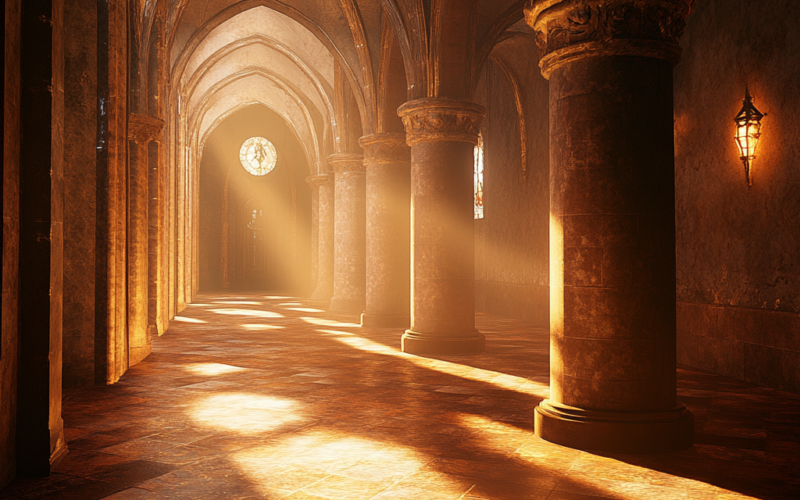The importance of lighting in interior design
Lighting in the interior plays not only a functional role, but is also a key element that shapes the atmosphere in the room. Well-designed lighting helps highlight the style and features of a space, creating the right mood for residents or visitors. It is also an important tool for emphasizing certain areas, furniture or decor. The visual perception of a room largely depends on light sources, their location and intensity.
The quality of lighting affects the perception of the size and proportions of the room. With the help of light you can make a space more comfortable or, conversely, expand its boundaries. A variety of lighting types, such as main, accent and decorative, allows you not only to organize a comfortable living space, but also to highlight key interior elements. Thus, the right choice of lighting helps to harmoniously combine functionality and aesthetics.
Types of lighting and their influence on the perception of space
There are several types of lighting, each of which has its own characteristics and affects the perception of space in its own way. Key lighting should provide enough brightness for everyday tasks such as reading or cooking. This lighting is used for general illumination and should be uniform so as not to create harsh shadows.
Accent lighting is used to highlight certain objects or areas in the interior. For example, you can use lamps to highlight paintings, sculptures or decorative elements. Such lighting helps to focus attention on specific parts of the room without disturbing the overall harmony. Decorative lighting creates additional visual impact, adding interest and style, but does not play a significant functional role in terms of visibility.
The role of lighting in creating mood and atmosphere
Light has a strong influence on the psycho-emotional perception of the environment. Warm, soft light creates an atmosphere of coziness, peace and relaxation, which is ideal for living spaces or recreational areas. It helps reduce stress levels and promotes relaxation. On the contrary, cool light can energize a person, improve concentration and create a more dynamic atmosphere, which is ideal for office or work areas.
The dynamics of lighting can be adjusted using various light sources: from dim lamps to bright LEDs. This helps create different moods depending on the time of day or situation. For example, soft lighting in the evening creates an intimate atmosphere, while bright LED lighting is ideal for the morning hours when you need to boost your energy and set yourself up for a productive day.
Lighting for different zones and levels: approaches and solutions
When designing lighting for different levels and zones, it is important to consider not only functional aspects, but also visual ones. For example, in the kitchen you need good brightness for work, so it is important to use spotlights here so as not to darken the work surfaces. In the bathroom, light should be bright and neutral to ensure good visibility, especially for procedures that require precision.
In the bedroom and relaxation area, the emphasis is on soft, warm lighting. Here you can use lights with dimmers to adjust the brightness and create an intimate atmosphere. For stairs and transition areas, it is also important to consider lighting to avoid dark areas and ensure safety, especially when transitioning between floors.
Technologies and innovations in lighting for levels
Modern lighting technologies open up new opportunities for designers. LED systems and smart lamps make it possible to integrate lighting into the overall interior design, controlling brightness and color using mobile applications. Such solutions make it possible to personalize lighting, choosing the right one depending on the time of day or mood.
Innovative lighting systems also allow for dynamic lighting changes, which is useful for multi-zone spaces. Using programmable lamps and motion sensors, you can create ideal conditions for a comfortable stay in the room. Turning lights on and off based on activity or time of day helps save energy and improve usability.
Lighting mistakes and how to avoid them
Lighting is an important element in interior design, but even professionals sometimes make mistakes when choosing and placing it. Errors in lighting can disrupt the harmony of a space and make it difficult to use. It’s important to keep a few key points in mind to avoid common problems.
- Incorrect light intensity
When designing lighting, a common mistake is choosing too bright or dim light for different areas. For example, in the bedroom, too bright lighting can disrupt the atmosphere of comfort and tranquility, while in the work area, on the contrary, dim light will make it difficult to complete tasks. - Uneven lighting
It is important to provide even lighting throughout the space, avoiding areas that are too dark or too bright. This can be achieved by proper distribution of lamps, which is especially important for large rooms with several levels. - Insufficient lighting of functional areas
Many people forget that lighting should be functional. For example, in a bathroom or kitchen, lighting that is too dim will make it difficult to perform everyday tasks such as cooking or grooming. - Poor placement of lamps
The placement of lamps should be thoughtful. It is important to consider that some areas, such as corners or high surfaces, need additional lighting to avoid creating dark spots. - Overloading space with lighting
Too many light sources can create visual overload, especially in small spaces. It is better to choose several correct light sources so as not to disturb the harmony and not to overload the interior.
Errors in lighting can make a space less comfortable and functional, so it is important to be careful when choosing lamps and their placement. By adhering to the basic principles, you can create a harmonious and comfortable space where lighting will serve not only a functional, but also an aesthetic purpose.
Questions and answers
Answer 1: Lighting helps emphasize the style and features of the interior, creating the desired atmosphere and visually changing the space.
Answer 2: Main lighting for general brightness, accent lighting to highlight objects, and decorative lighting to create visual effects.
Answer 3: Warm light creates comfort and relaxation, while cold light activates a person and increases concentration.
Answer 4: Bright lighting should be used for the kitchen and work areas, and soft and warm lighting for the bedroom and recreation areas.
Answer 5: LED systems and smart lamps allow you to adjust brightness and color, as well as create dynamic lighting depending on the time of day.

